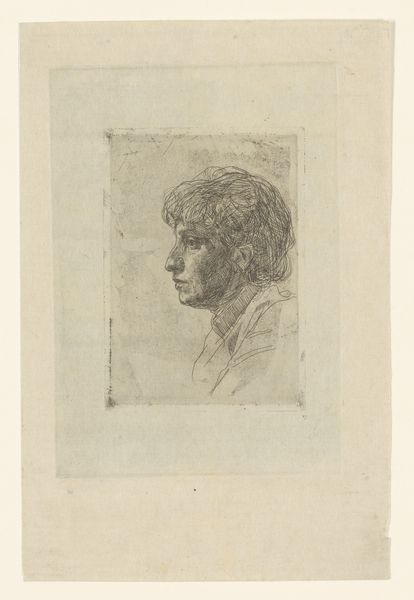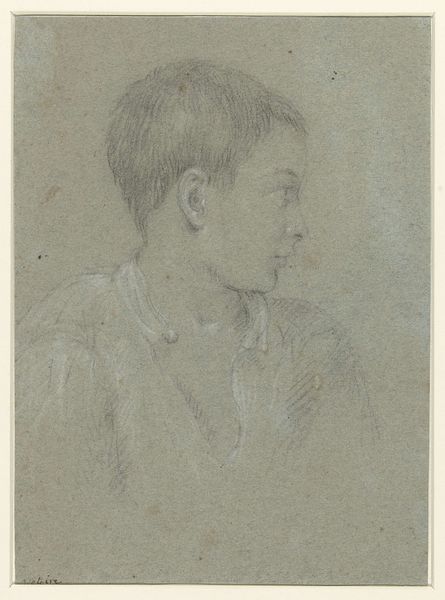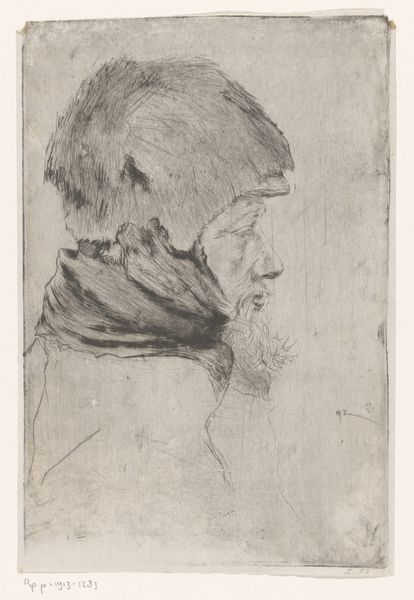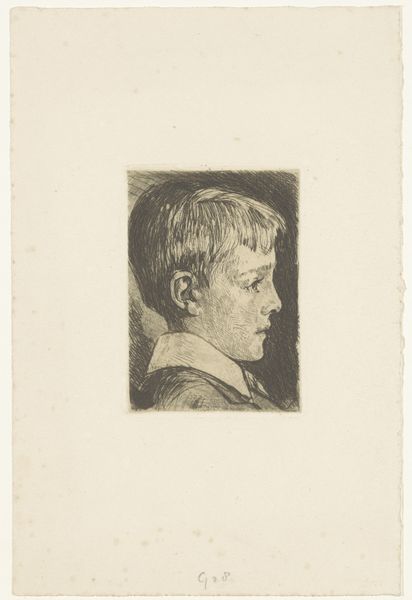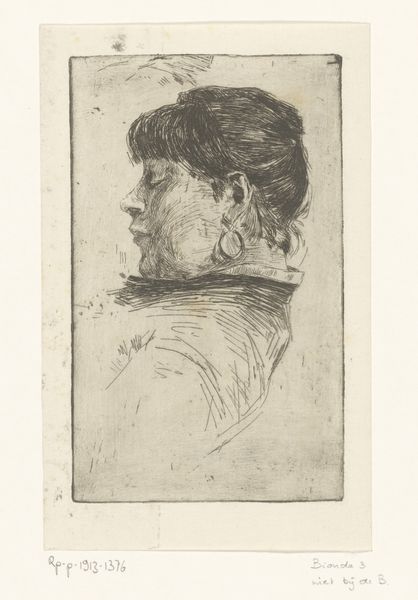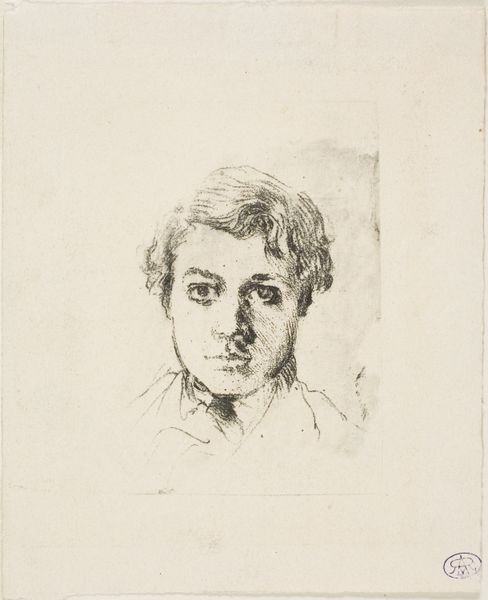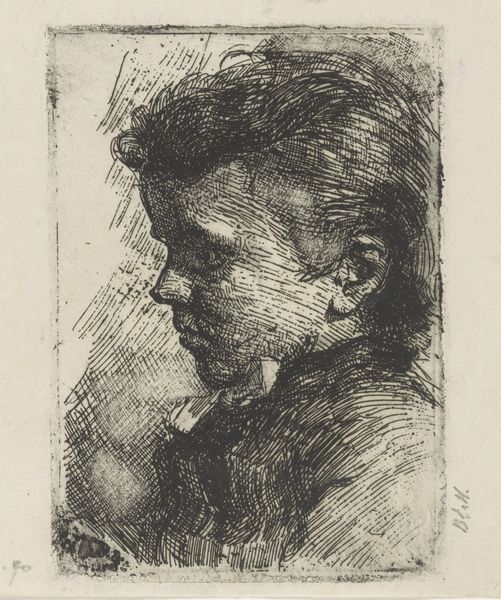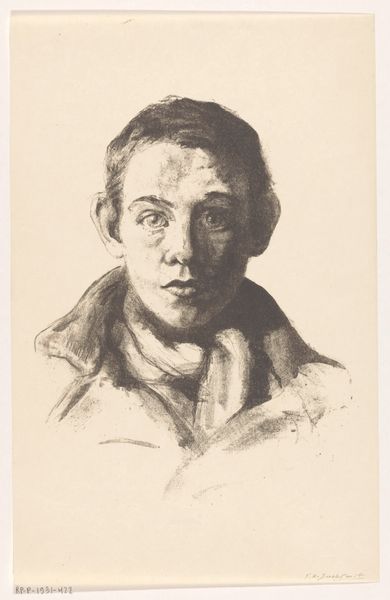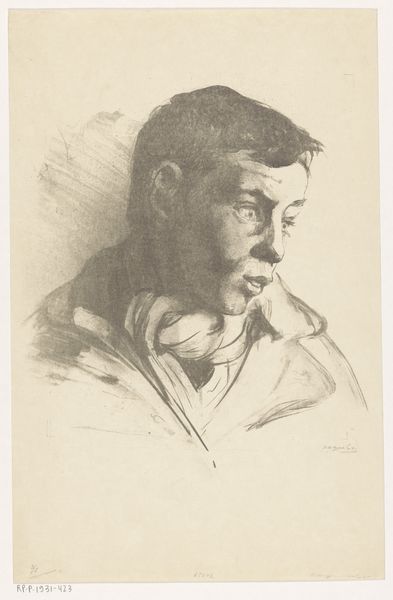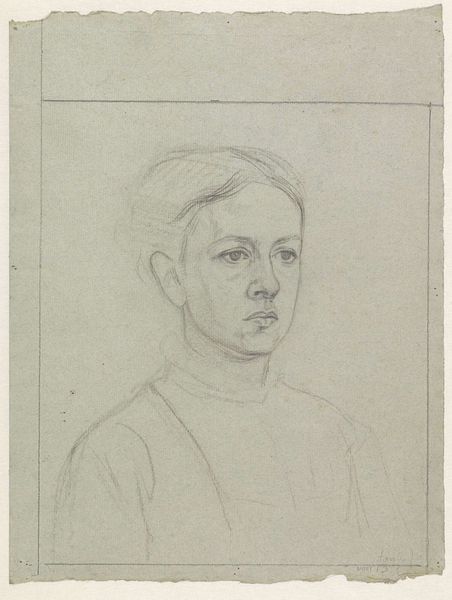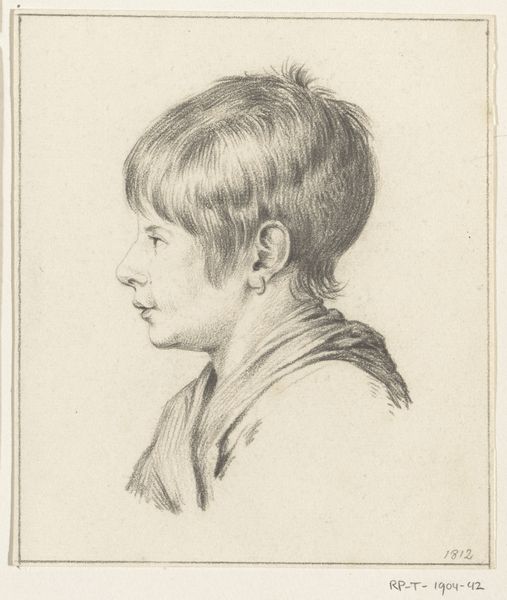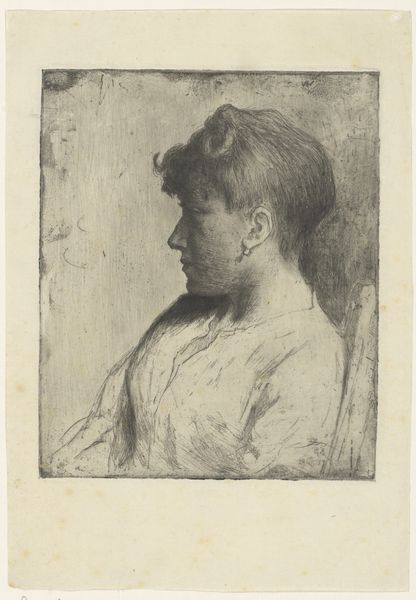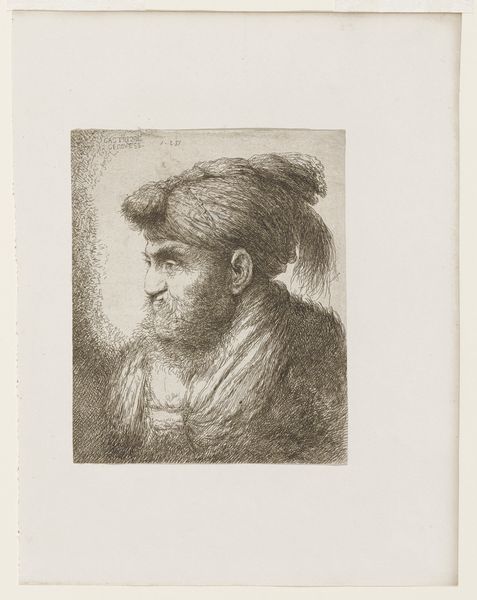
drawing, print, etching
#
portrait
#
pencil drawn
#
drawing
#
art-nouveau
# print
#
etching
#
charcoal drawing
#
pencil drawing
#
portrait drawing
Dimensions: height 100 mm, width 88 mm
Copyright: Rijks Museum: Open Domain
Curator: This is Jan Toorop's "Portret van Albert Plasschaert," created in 1898. The artwork is currently held at the Rijksmuseum, and it exemplifies the aesthetic spirit of the Art Nouveau movement through a combined etching and print medium. Editor: It’s evocative. Immediately, I perceive a mood of introspection; Plasschaert’s downcast gaze invites contemplation. There's a distinct absence of vibrancy, lending itself to thoughts on melancholy and subdued thought. Curator: Plasschaert was a significant figure in the art world, known for his socialist leanings and his profound engagement with contemporary art criticism. Given Toorop's association with symbolism and a turn-of-the-century mood steeped in both promise and anxiety, the choice to depict him in this pensive manner opens interesting possibilities regarding their dialogue and shared beliefs. Editor: Right, I notice how the symbols seem muted or absent entirely, though! The sharp lines and the emphasis on Plasschaert’s profile evoke something simpler, more direct. There's almost an austerity to it. Does this choice potentially communicate ideas around Plasschaert’s personal sacrifice for his art? Curator: That reading is interesting. Consider that this was produced during a period of rapid social change and growing artistic experimentation. Both men positioned themselves critically toward established norms. Toorop, significantly, was known for his spiritual and mystical imagery; is the almost unsettlingly sober depiction of Plasschaert intended to suggest more profound insight or sacrifice on Plasschaert's behalf, considering the subject’s personal commitments to socialist causes? Editor: Possibly. I am fascinated with how it seems to straddle a tension: It seems that he wants to emphasize Plasschaert's humanity, using light and shadow to define the contours of his face, yet the stylistic elements pull away toward the era’s formal preoccupations. It seems he uses the face to explore some underlying idea of what he stands for and suffers. Curator: It also prompts questions regarding representation of intellectual and political identity at the time. How much does Toorop project, and how much does he observe about the burden of such critical labor? These themes of political advocacy, existential angst, and the artist's inner turmoil resonate powerfully across time, and this work offers a glimpse into that complex moment. Editor: Indeed. This glimpse into turn-of-the-century intellectual life resonates deeply, inviting reflection on commitment and consequence. Curator: It truly underlines the profound impact of art in an era of change.
Comments
No comments
Be the first to comment and join the conversation on the ultimate creative platform.
